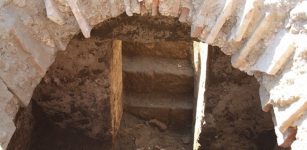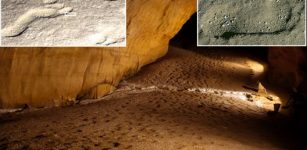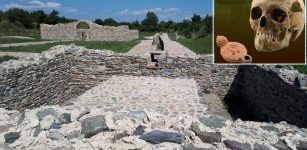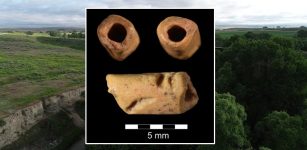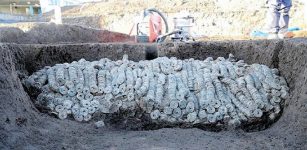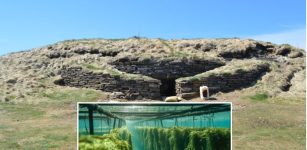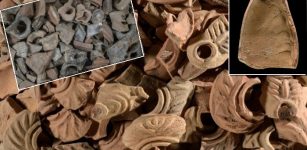Stonehenge’s Monumental Altar Stone Came From Scotland – Not Wales As Previously Thought
Jan Bartek - AncientPages.com - Recent research conducted by Curtin University has revealed that the monumental six-tonne Altar Stone at Stonehenge, previously thought to have originated in Wales, is, in fact, from Scotland. This discovery has significant implications regarding the sophistication of transportation methods and social organization during the stone's placement in southern England approximately 5,000 years ago.
The Altar Stone at Stonehenge. Credit: English Heritage
The research team at Curtin University analyzed the age and chemical composition of mineral grains within fragments of the Altar Stone. This sandstone block, measuring 5 x 1 meters and 50cm in thickness, is centrally located within Stonehenge's renowned stone circle in Wiltshire.
Anthony Clarke, the lead author and PhD student from the Timescales of Mineral Systems Group within Curtin's School of Earth and Planetary Sciences, reported that the mineral analysis of the Altar Stone fragments indicated a match with rocks from northeast Scotland. Concurrently, the analysis definitively distinguished these fragments from Welsh bedrock.
“Our analysis found specific mineral grains in the Altar Stone are mostly between 1000 to 2000 million years old, while other minerals are around 450 million years old,” Clarke said.
“This provides a distinct chemical fingerprint suggesting the stone came from rocks in the Orcadian Basin, Scotland, at least 750 kilometers away from Stonehenge.
“Given its Scottish origins, the findings raise fascinating questions, considering the technological constraints of the Neolithic era, as to how such a massive stone was transported over vast distances around 2600 B.C.
“This discovery also holds personal significance for me. I grew up in the Mynydd Preseli, Wales, where some of Stonehenge’s stones came from. I first visited Stonehenge when I was one year old and now at 25, I returned from Australia to help make this scientific discovery – you could say I’ve come full circle at the stone circle.”
Study co-author Professor Chris Kirkland, also from the Timescales of Mineral Systems Group at Curtin, said the findings had significant implications for understanding ancient communities, their connections, and their transportation methods.
“Our discovery of the Altar Stone’s origins highlights a significant level of societal coordination during the Neolithic period and helps paint a fascinating picture of prehistoric Britain,” Professor Kirkland said.
See also: More Archaeology News
“Transporting such massive cargo overland from Scotland to southern England would have been extremely challenging, indicating a likely marine shipping route along the coast of Britain.
“This implies long-distance trade networks and a higher level of societal organization than is widely understood to have existed during the Neolithic period in Britain.”
The study was published in Nature
Written by Jan Bartek - AncientPages.com Staff Writer


